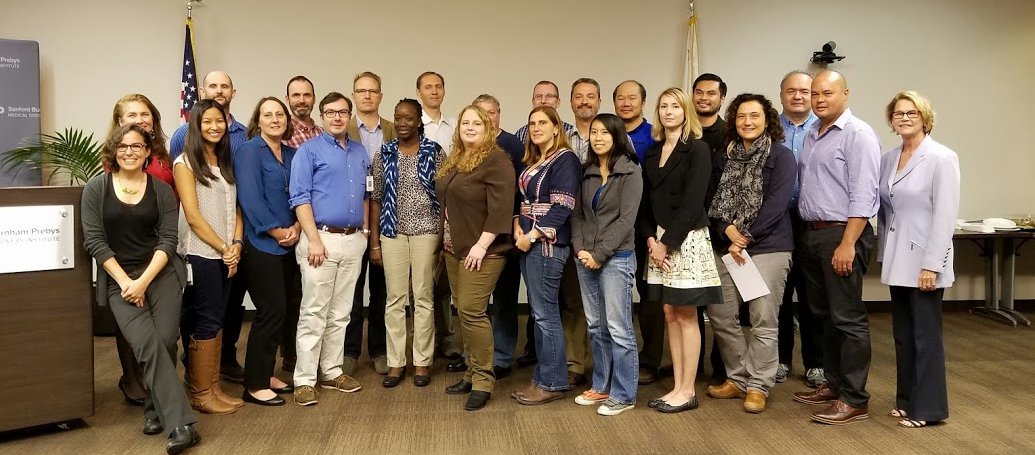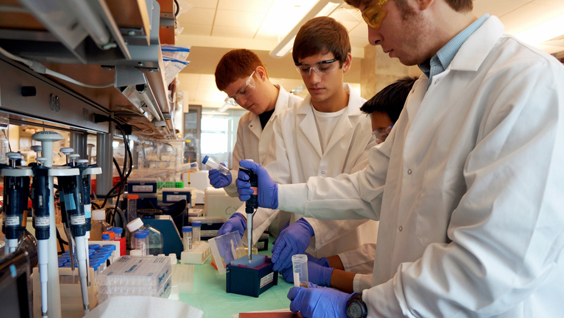Sanford Burnham Prebys Medical Discovery Institute (SBP) has long been known for exceptional science, and now a new program at the Institute focused on project and alliance management is helping scientists further develop their capabilities. With this investment, researchers will have better tools to plan and execute their projects and work effectively with project collaborators, increasing their chances of success in the competitive funding landscape. The first nine-week project management course put together specifically for SBP scientists and staff graduated its first class in early November.
The course, designed by UC San Diego Extension and taught by Yves Theriault, PhD, PMP, president of The California Institute for Performance Management, is just the first step towards SBP’s goal—building a culture of effective planning and execution of research projects. Those who have completed this course are already scheduling regular lunches to help each other work through challenges. Plus, another training in alliance management—strategies that ensure successful partnerships with other organizations—will be held in the spring, and both will be repeated annually.
SBP is making this investment because its leadership believes in developing the Institute’s people. As CEO Perry Nisen, MD, PhD, said prior to the certificate ceremony, “We want to provide our staff with the resources they need to succeed, and project management is the key to making science run smoothly.”
Participants in the course are already seeing benefits. “Having applied these ideas—especially standardizing and documenting procedures and thinking ahead to what might go wrong—to my project, where we send fruit flies into space to understand the effects of low gravity on the heart, I feel much more prepared for the next launch,” said Erika Taylor, research technician in the lab of Rolf Bodmer, PhD
“Having a dedicated project manager will make our grant proposals more competitive,” added Peter Teriete, D.Phil., staff scientist in the laboratory of Nicholas Cosford, PhD
Improved management capabilities should also improve SBP labs’ chances at forming new partnerships with industry.
“We believe in developing our people,” added Letizia Amadini-Lane, PharmD, VP of Strategic Alliances and the driving force behind the new training. “Investing in project management and alliance management capabilities will contribute to the success of the Institute going forward. We want to be known as leaders in non-profit research and drug discovery, and to be the partner of choice for biotech and pharma. To get there, we have to speak their language—these courses will help bridge the gap between academia and industry.”



